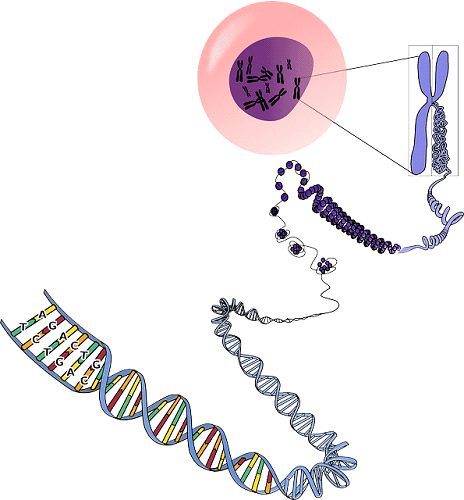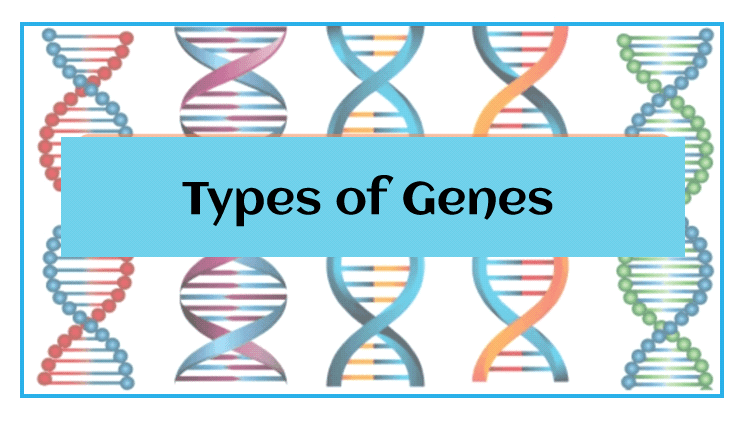Genes Meaning
Genes are functional segments of DNA and the building blocks of genetic information which is mainly identified in all living organisms. Scientists continue to research these structures, which hold many mysteries despite what we already know about them. Genetic research can uncover our ancestry and predict potential diseases based on our genes.
It is crucial to have a deep understanding of what exactly genes are and how they act. Gene structure is one key area of focus which refers to the physical makeup or arrangement of genes within an organism's DNA sequence. The composition of genes also plays a critical role in determining their function within an organism.
Genes and its History

Cells are the basic units of life, containing genes that determine their behaviour and development. Despite being too small to observe with the naked eye, individuals have trillions of cells in their bodies. Examples include red blood cells, ovum, sperm, and neurons. Understanding cells is crucial for grasping the concept of genes and the building blocks of life.
In 1909, Danish botanist Wilhelm Johannsen coined the term "gene" to describe a functioning segment of DNA that carries information from one generation to another through DNA replication during cell division. Genes are defined as the fundamental physical and functional unit of heredity, which is coding for polypeptide chains.
Genetic research started before DNA was discovered, with Gregor Mendel being known as the "Father of Genetics." In 1866, he published a paper discussing inheritance factors but never used the term "gene." Despite this, his work established principles still used in genetics research today.
Gene Structure
According to research, Genes are a component of DNA, consisting of phosphates, sugar, and nitrogenous bases. DNA is produced by polynucleotide chains with complementary base pairs which are linked by hydrogen bonds. Adenine pairs with Thymine, on the other hand, Guanine pairs with Cytosine. Genes are functional parts of DNA and can be found scattered throughout the molecule.
Prokaryotes arrange genes consecutively, while eukaryotes have non-functional sequences interrupting their genes called introns. Eukaryotic functional sequences are called exons and contain information for polypeptide chain formation.
Genes have regulatory sequences such as promoters, terminators, and enhancers. Promoters are situated at the 5'-end of a gene and deliver space for RNA polymerase to bind and start transcription. Terminators are identified towards the 3' end of genes and signify where transcription ends.
Furthermore, Genes are mainly made up of DNA, except in certain viruses that have RNA. DNA consists of 2 twisted nucleotide chains, and genes consist of tiny chemicals known as nitrogenous bases. The size of human genes varies greatly, from one million bases to just a few hundred. There are 4 kinds of nitrogenous bases Adenine, Cytosine, Guanine and Thymine. Some genes have non-coding sections called introns, which are spliced out before protein synthesis. The coding sections of RNA and DNA are known as exons.
Genes Classification

Different gene categories exist in multiple organisms, such as viruses, bacteria, plants, animals and many others.
- Housekeeping Genes: These are essential for fundamental cellular functions and are expressed in every cell of an organism under normal conditions. Humans have 3408 housekeeping genes, including PGK1 and ATPase enzyme genes.
- Non-constitutive Genes: These genes, also called luxury or specialist genes, are not continuously expressed in every cell and can be switched on or off based on cellular requirements. It can be classified into 2 categories.
- Inducible Genes: This type of gene is only activated in the presence of an inducer, such as the Lac operon, which is triggered by lactose.
- Repressible Genes: These are genes that remain active until they are inhibited by a chemical or repressor. An example given is the trp genes, which are suppressed by tryptophan.
- Structural Genes: Protein-coding genes in eukaryotes have intervening sequences called introns. They are regulated by enhancers, operators, and promoters located upstream of the gene. Genes can be divided into smaller functional units through mutation and recombination.
- Muton: A muton is the smallest part of a chromosome that can mutate.
- Recon: It is a small segment that undergoes recombination during meiosis.
Genes can be either monocistronic or polycistronic.
- Monocistronic genes are found in eukaryotes and code for only one polypeptide chain. They have their own regulatory sequence and include all eukaryotic structural genes.
- Polycistronic genes control multiple genes in prokaryotes, resulting in codes for several polypeptide chains. These genes form an operon system and are involved in interrelated functions. An example is the Lac operon, where one regulatory system controls three genes that help metabolize lactose.
Other Genes Types
- Pseudogenes: These are non-functional copies of genes that have mutated and can no longer code for functional proteins. They are often identical to functional genes and identified in multiple copies inside vertebrate genomes, such as the GAPDH locus.
- Transposons: Jumping genes, also known as transposable elements, were first discovered in maize by Nobel Prize winner Barbara McClintock. These segments of DNA can move from one location to another within a cell's genome and even jump between chromosomes. Although they don't code for any protein, they make up about 45% of the human genome and are typically found near the telomeric region.
- Processed Genes: Processed genes lack introns and are formed through retroviral reverse transcription in eukaryotes.
- Overlapping Genes: These genes are segments of DNA that share a genomic location and can code for multiple polypeptides. They are commonly identified in prokaryotes, eukaryotic organelles, as well as viruses.
- Split Genes: These genes involve both exons and introns and were found by Nobel Prize winners Sharp and Roberts in 1993. It is mainly identified in eukaryotes.
- Regulator Genes: These genes control the transcription of structural genes by producing a repressor protein that binds to the operator and turns off the gene. This type of genes is located upstream of the coding sequence and creates a repressor mRNA.
- Operator Genes: This gene is a switch located before the cistron and it is managed by a repressor protein created by the regulator gene.
- Terminator Genes: The terminator gene is located after the cistron and marks where transcription ends, causing RNA polymerase to detach from DNA.
- Silencer Genes: The silencer gene suppresses the activity of other genes when it is unnecessary.
- Enhancer Genes: These genes boost the functions of other genes that contribute to producing a specific protein.
- Integrated Genes: These genes are those that exist in multiple chromosomes or at different locations within a single chromosome. These genes work together to produce a specific outcome.
- Epistatic Genes: These genes can mask the effect of other genes that code for the same physical trait. For instance, sweet peas have genes that determine flower color, but some epistatic genes can override those determinations.
- Hypostatic Genes: Hypostatic genes are those genes whose expression changes due to epistatic gene expression.
Genes Function
- Genes are responsible for controlling the functions of DNA and RNA.
- Genes make proteins for muscles, skin, and tissue.
- Also, genes control enzyme production and protein synthesis, which is responsible for most activities in the body.
- Genes are responsible for controlling cell functions and passing information from parent to offspring through a set of instructions.
- It contains instructions to produce proteins, which perform numerous functions in the cell. For instance, bodybuilding, enzymes, hormones, messengers, and pigments.
- Genes determine the behavioral and physical traits of a human being, such as height, color, structure, and habits.
- Genes create antibodies and pass on information from generation to generation.
Genetic Disorders and how they can Impact a Person's Health
Genetic conditions are disorders inherited from parents and often run in families. Sickle cell anaemia is a prevalent genetic disorder where the gene causes red blood cells to misshapen, making it tough for them to carry oxygen throughout the body. There is more than 10,000 genetic conditions have been found. Genes have been proven to impact the likelihood of developing numerous conditions such as diabetes, cancer, and Alzheimer's.
Genetic disorders typically arise in three different ways.
- A gene passed from parent to offspring mainly causes a disorder during birth or later in life.
- Inheriting a mutated gene can make somebody more likely to produce disease when exposed to various components. Without exposure, the situation may never manifest.
- A genetic change during egg/sperm formation or at conception.
Conclusion
Genes are functional segments of DNA that code for proteins. A structural gene consists of 3 parts such as the structural gene itself, a promoter, and a terminator. The promoter is upstream and provides RNA polymerase with space to bind and begin expression, while the terminator is downstream and causes the dissociation of RNA polymerase from the DNA molecule.
Genes come in different types and code for polypeptide chains that are used by cells. They determine our appearance and cellular activities and carry information from one generation to the next.
Genes contain crucial instructions for our bodies, but changes or spontaneous mutations can cause disorders. However, scientists are developing ways to replace incorrect genes with correct ones to solve these problems.
|


 For Videos Join Our Youtube Channel: Join Now
For Videos Join Our Youtube Channel: Join Now









